#less than evil
Text
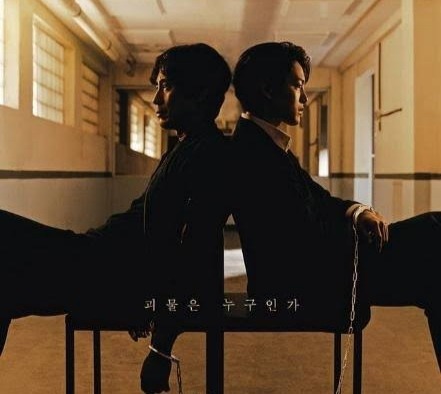




Me and my obsession of anything with the word evil in it.
Beyond Evil / The Devil Judge / The Worst Of Evil / Flower Of Evil / Less Than Evil
#the homoerotic tension in the posters tho#the devil judge#beyond evil#the worst of evil#flower of evil#less than evil#kdrama#kdrama edit#kang yo han#kdrama daily
479 notes
·
View notes
Text
Shin Hakyun's characters in beyond evil and less than evil are kinda similar, but, anyway, Lee Dongsik is crazier
5 notes
·
View notes
Text
People playing Elden Ring and looking for the "good" demigod to root for are missing the point. Pick your favorite mass murdering war criminal megalomaniac with mommy issues and endlessly simp for them like the rest of us, cowards.
#incorrect quotes#incorrect super smash bros#Elden Ring#Soulsborne#Shadow Soulsborne Ring#all this x did nothing wrong crap#or my demigod is less evil than your demigod is stupid#you can't handle the incest and murder? grow the fuck up#the atrocities are part of them and I decided they're funny#Ranni#Miquella#Malenia#Radahn#Rykard#Morgott#Mohg#Messmer#Godwyn#Godrick
5K notes
·
View notes
Text
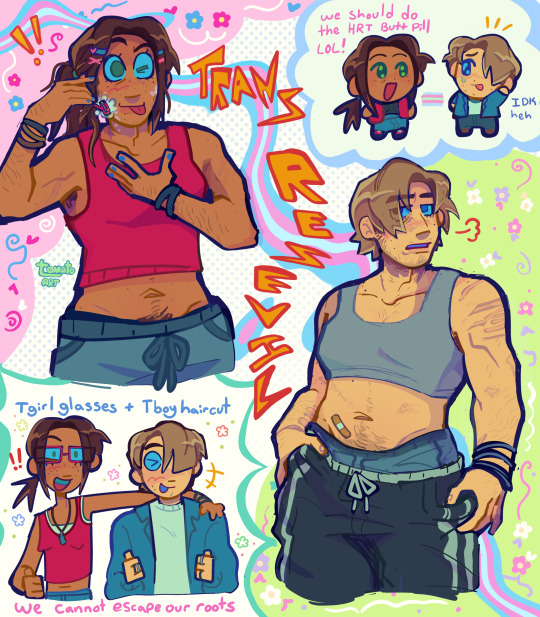
doodle page who cheered
#claire redfield#leon kennedy#cleon#resident evil#re2#leon s kennedy#tagged re2 bc it’s the two of them not that it’s like the timeline nessesarily sorry#ermmm somethings off w anatomy but i always forget to use refs but i think its ok for no real study other than memory..!#and I’m too lazy to fix it bc I merged all the layers to force myself to take less time on it genius hack to make myself move on#bwehhh >_< xP ó_ò#trans resevil art u will always be famous#hopefully this will not attract a weird group of ppl…🩵#queue are lovely#hope y’all r well🫶#just found out one of the worst ppl I’ve met got into re. tears down my face
863 notes
·
View notes
Text
So I accidentally almost got into an argument on Twitter, and now I'm thinking about bad historical costuming tropes. Specifically, Action Hero Leather Pants.
See, I was light-heartedly pointing out the inaccuracies of the costumes in Black Sails, and someone came out of the woodwork to defend the show. The misunderstanding was that they thought I was dismissing the show just for its costumes, which I wasn't - I was simply pointing out that it can't entirely care about material history (meaning specifically physical objects/culture) if it treats its clothes like that.
But this person was slightly offended on behalf of their show - especially, quote, "And from a fan of OFMD, no less!" Which got me thinking - it's true! I can abide a lot more historical costuming inaccuracy from Our Flag than I can Black Sails or Vikings. And I don't think it's just because one has my blorbos in it. But really, when it comes down to it...
What is the difference between this and this?
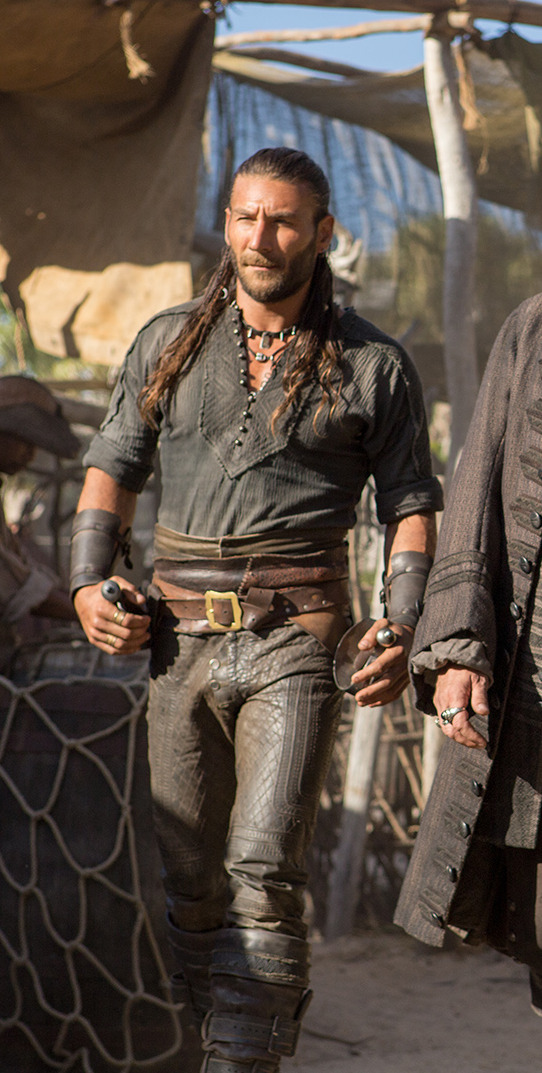
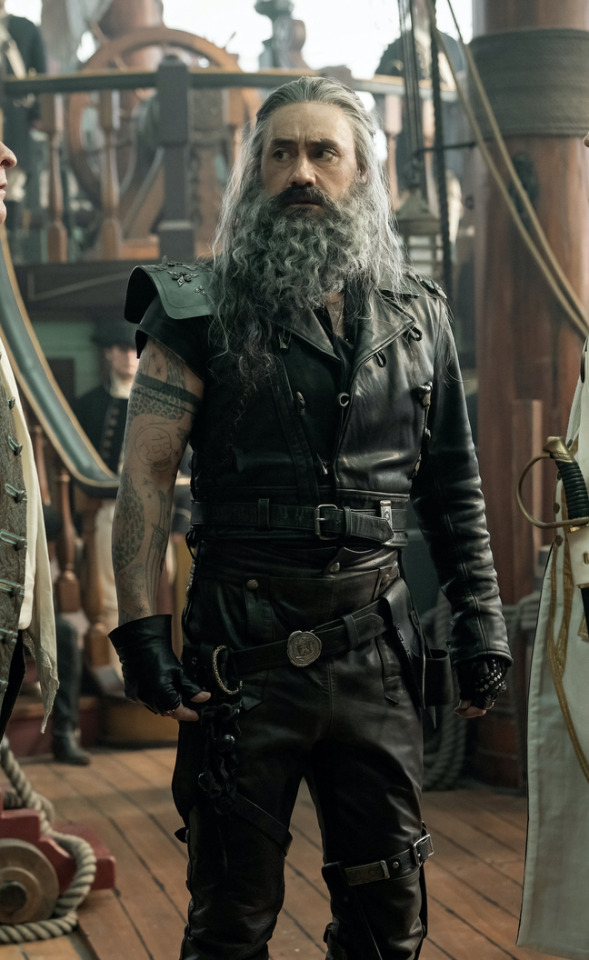
Here's the thing. Leather pants in period dramas isn't new. You've got your Vikings, Tudors, Outlander, Pirates of the Caribbean, Once Upon a Time, Will, The Musketeers, even Shakespeare in Love - they love to shove people in leather and call it a day. But where does this come from?

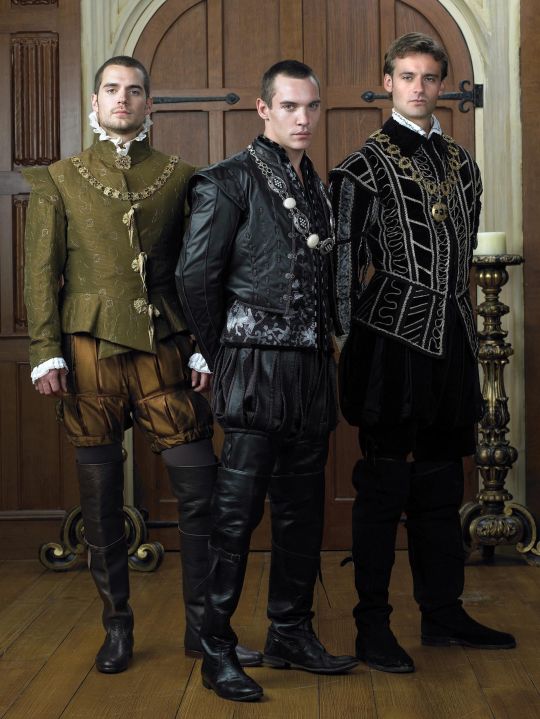
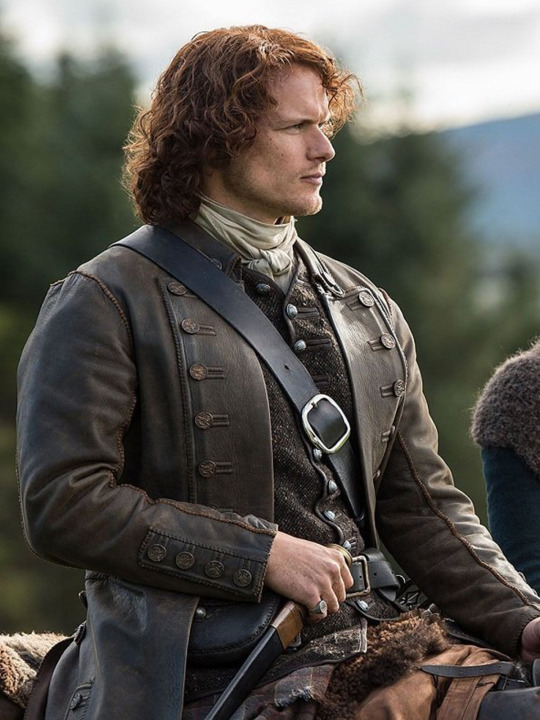

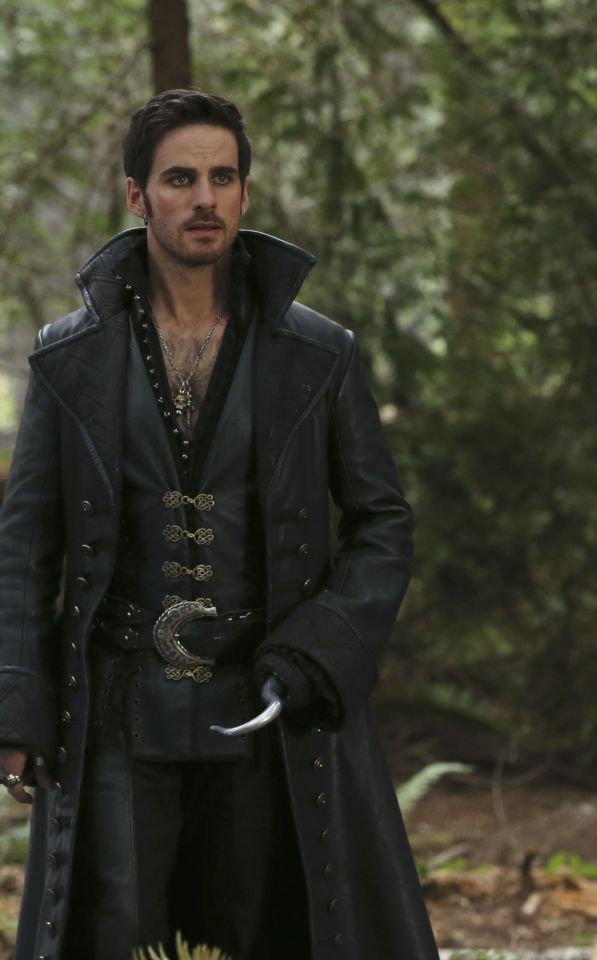
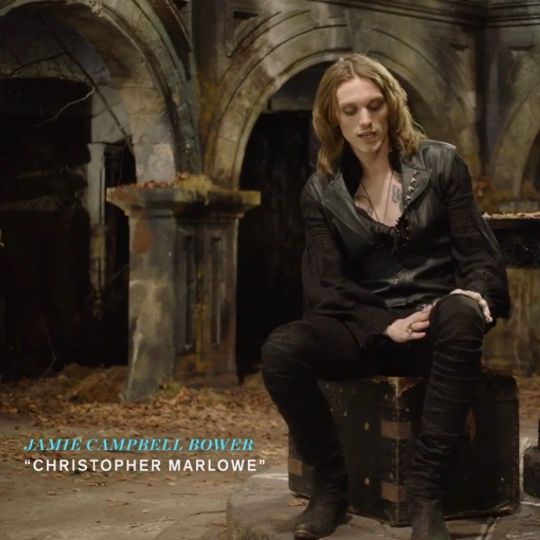
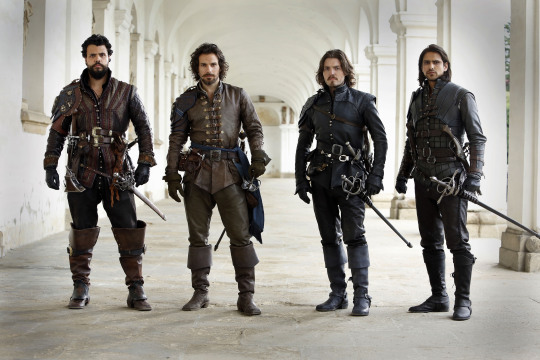

Obviously we have the modern connotations. Modern leather clothes developed in a few subcultures: cowboys drew on Native American clothing. (Allegedly. This is a little beyond my purview, I haven't seen any solid evidence, and it sounds like the kind of fact that people repeat a lot but is based on an assumption. I wouldn't know, though.) Leather was used in some WWI and II uniforms.
But the big boom came in the mid-C20th in motorcycle, punk/goth, and gay subcultures, all intertwined with each other and the above. Motorcyclists wear leather as practical protective gear, and it gets picked up by rock and punk artists as a symbol of counterculture, and transferred to movie designs. It gets wrapped up in gay and kink communities, with even more countercultural and taboo meanings. By the late C20th, leather has entered mainstream fashion, but it still carries those references to goths, punks, BDSM, and motorbike gangs, to James Dean, Marlon Brando, and Mick Jagger. This is whence we get our Spikes and Dave Listers in 1980s/90s media, bad boys and working-class punks.


And some of the above "historical" design choices clearly build on these meanings. William Shakespeare is dressed in a black leather doublet to evoke the swaggering bad boy artist heartthrob, probably down on his luck. So is Kit Marlowe.
But the associations get a little fuzzier after that. Hook, with his eyeliner and jewellery, sure. King Henry, yeah, I see it. It's hideously ahistorical, but sure. But what about Jamie and Will and Ragnar, in their browns and shabby, battle-ready chic? Well, here we get the other strain of Bad Period Drama Leather.
See, designers like to point to history, but it's just not true. Leather armour, especially in the western/European world, is very, very rare, and not just because it decays faster than metal. (Yes, even in ancient Greece/Rome, despite many articles claiming that as the start of the leather armour trend!) It simply wasn't used a lot, because it's frankly useless at defending the body compared to metal. Leather was used as a backing for some splint armour pieces, and for belts, sheathes, and buckles, but it simply wasn't worn like the costumes above. It's heavy, uncomfortable, and hard to repair - it's simply not practical for a garment when you have perfectly comfortable, insulating, and widely available linen, wool, and cotton!
As far as I can see, the real influence on leather in period dramas is fantasy. Fantasy media has proliferated the idea of leather armour as the lightweight choice for rangers, elves, and rogues, a natural, quiet, flexible material, less flashy or restrictive than metal. And it is cheaper for a costume department to make, and easier for an actor to wear on set. It's in Dungeons and Dragons and Lord of the Rings, King Arthur, Runescape, and World of Warcraft.

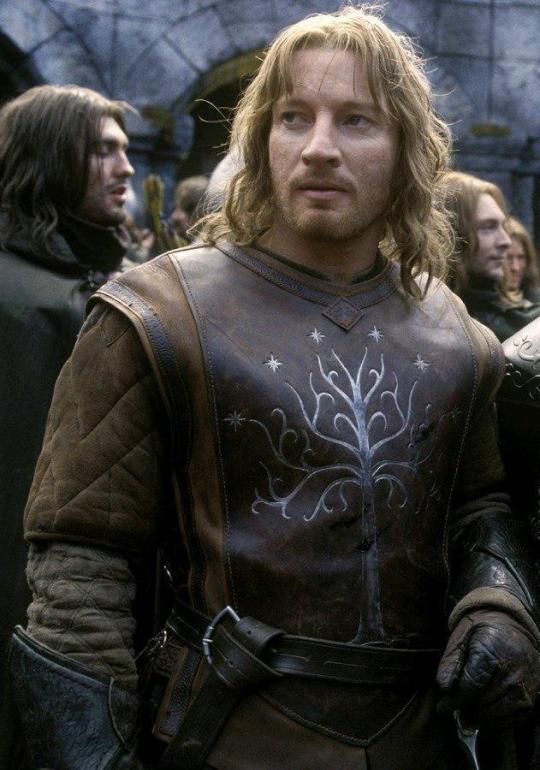
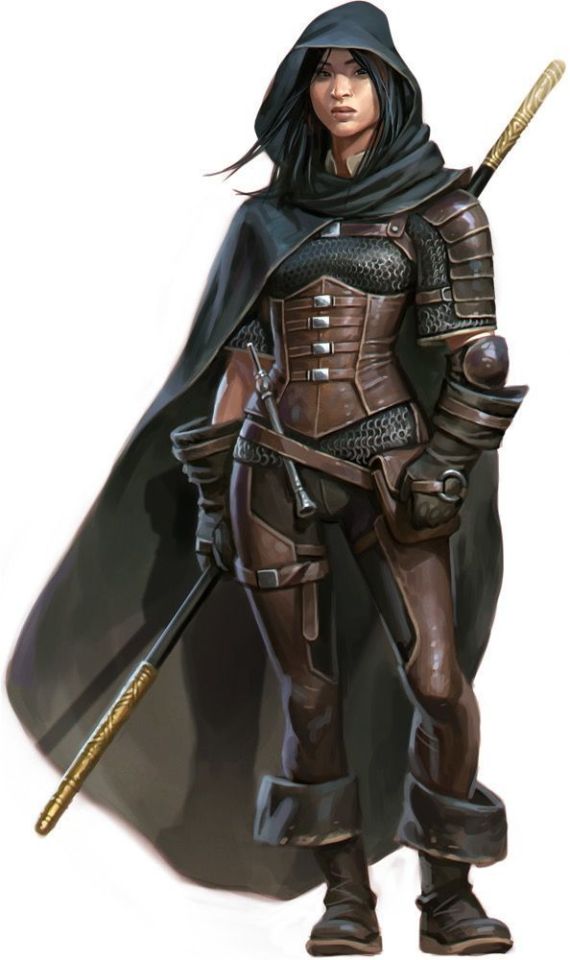
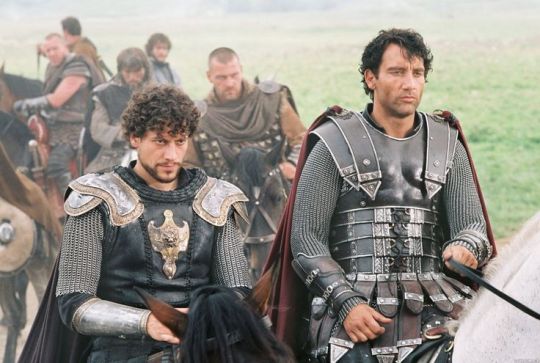

And I think this is how we get to characters like Ragnar and Vane. This idea of leather as practical gear and light armour, it's fantasy, but it has this lineage, behind which sits cowboy chaps and bomber/flight jackets. It's usually brown compared to the punk bad boy's black, less shiny, and more often piecemeal or decorated. In fact, there's a great distinction between the two Period Leather Modes within the same piece of media: Robin Hood (2006)! Compare the brooding, fascist-coded villain Guy of Gisborne with the shabby, bow-wielding, forest-dwelling Robin:

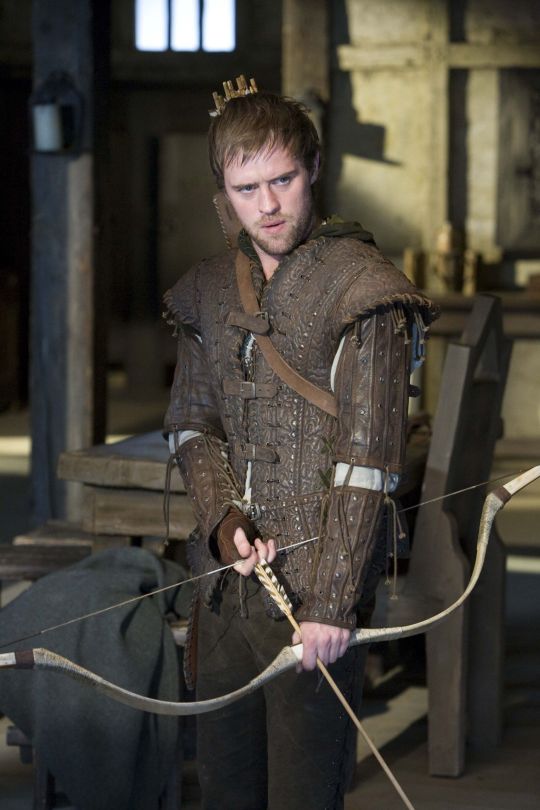
So, back to the original question: What's the difference between Charles Vane in Black Sails, and Edward Teach in Our Flag Means Death?
Simply put, it's intention. There is nothing intentional about Vane's leather in Black Sails. It's not the only leather in the show, and it only says what all shabby period leather says, relying on the same tropes as fantasy armour: he's a bad boy and a fighter in workaday leather, poor, flexible, and practical. None of these connotations are based in reality or history, and they've been done countless times before. It's boring design, neither historically accurate nor particularly creative, but much the same as all the other shabby chic fighters on our screens. He has a broad lineage in Lord of the Rings and Pirates of the Caribbean and such, but that's it.
In Our Flag, however, the lineage is much, much more intentional. Ed is a direct homage to Mad Max, the costuming in which is both practical (Max is an ex-cop and road warrior), and draws on punk and kink designs to evoke a counterculture gone mad to the point of social breakdown, exploiting the thrill of the taboo to frighten and titillate the audience.
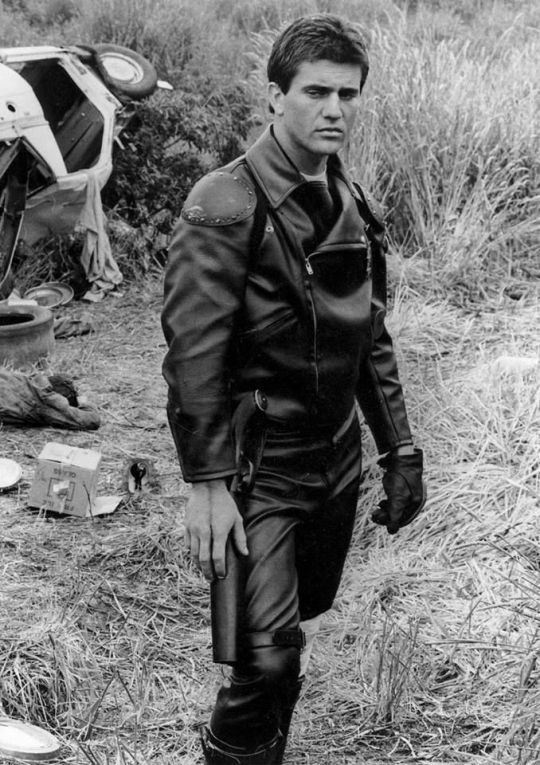
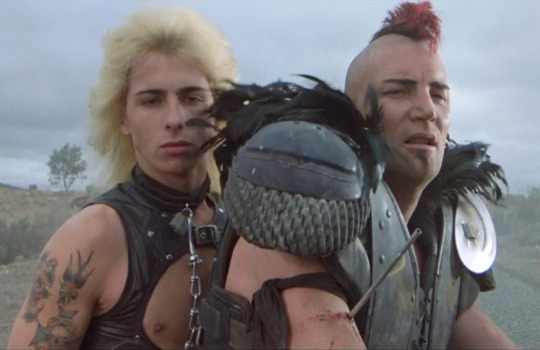
In particular, Ed is styled after Max in the second movie, having lost his family, been badly injured, and watched the world turn into an apocalypse. He's a broken man, withdrawn, violent, and deliberately cutting himself off from others to avoid getting hurt again. The plot of Mad Max 2 is him learning to open up and help others, making himself vulnerable to more loss, but more human in the process.

This ties directly into the themes of Our Flag - it's a deliberate intertext. Ed's emotional journey is also one from isolation and pain to vulnerability, community, and love. Mad Max (intentionally and unintentionally) explores themes of masculinity, violence, and power, while Max has become simplified in the popular imagination as a stoic, badass action hero rather than the more complex character he is, struggling with loss and humanity. Similarly, Our Flag explores masculinity, both textually (Stede is trying to build a less abusive pirate culture) and metatextually (the show champions complex, banal, and tender masculinities, especially when we're used to only seeing pirates in either gritty action movies or childish comedies).
Our Flag also draws on the specific countercultures of motorcycles, rockers, and gay/BDSM culture in its design and themes. Naturally, in such a queer show, one can't help but make the connection between leather pirates and leather daddies, and the design certainly nods at this, with its vests and studs. I always think about this guy, with his flat cap so reminiscient of gay leather fashions.

More overtly, though, Blackbeard and his crew are styled as both violent gangsters and countercultural rockstars. They rove the seas like a bikie gang, free and violent, and are seen as icons, bad boys and celebrities. Other pirates revere Blackbeard and wish they could be on his crew, while civilians are awed by his reputation, desperate for juicy, gory details.
This isn't all of why I like the costuming in Our Flag Means Death (especially season 1). Stede's outfits are by no means accurate, but they're a lot more accurate than most pirate media, and they're bright and colourful, with accurate and delightful silks, lace, velvets, and brocades, and lovely, puffy skirts on his jackets. Many of the Revenge crew wear recognisable sailor's trousers, and practical but bright, varied gear that easily conveys personality and flair. There is a surprising dedication to little details, like changing Ed's trousers to fall-fronts for a historical feel, Izzy's puffy sleeves, the handmade fringe on Lucius's red jacket, or the increasing absurdity of navy uniform cuffs between Nigel and Chauncey.
A really big one is the fact that they don't shy away from historical footwear! In almost every example above, we see the period drama's obsession with putting men in skinny jeans and bucket-top boots, but not only does Stede wear his little red-heeled shoes with stockings, but most of his crew, and the ordinary people of Barbados, wear low boots or pumps, and even rough, masculine characters like Pete wear knee breeches and bright colours. It's inaccurate, but at least it's a new kind of inaccuracy, that builds much more on actual historical fashions, and eschews the shortcuts of other, grittier period dramas in favour of colour and personality.
But also. At least it fucking says something with its leather.
#everyone say 'thank you togas' for not including a long tangent about evil rimmer in red dwarf 5x05#Our Flag Means Death#Togas does meta#and yes these principles DO fall apart slightly in s2 and i DON'T like those costumes as much#don't get me wrong they're fun and gorgeous - but generally a bit less deep and more inaccurate. so. :(#I'm not sure this really says anything new about Our Flag but I just needed to get my thoughts out#i hate hate hate Gritty Period Drama costumes they're so boring and so ugly and so wrong#god bless OFMD for using more than 3 muted colours and actually putting men in heels (and not as a shorthand for rich/foppish villainy) <3#looking at that Tudors still is insane like they really will go to any lengths to not make men feel like they've got bare legs XD#image descriptions in alt text#and yes i DID just sink about two hours into those so you'd better appreciate them
1K notes
·
View notes
Text
leon kennedy is so kissable, so easy to mark up. every time your lips meet for more than a simple peck, you start to nip at his skin. and that nipping turns to biting and sucking and licking. you can't help it. he gets so flustered and sweet and pliable as soon as your teeth graze across his neck. cute little whines escaping as he turns to putty in your hands. spots of reds and purples bloom wherever you can reach, a mirror of the bruises that litter his flesh from less pleasant experiences, from those far less tender than you. he'd rather cover those up. but your love bites, he'll wear like a badge of honor.
#sigh... i miss him (i played his game less than an hour ago)#resident evil#resident evil x reader#leon kennedy#leon kennedy x you#leon kennedy x reader#leon s kennedy#perce.doc#.resi
560 notes
·
View notes
Text

Emperor Eddie would drink the blood from his enemies from a golden chalice, not because he’s vampire, no. He’s human. He’s simply a psychopath and enjoys it too much 🖤
#please don’t look at it too long I literally did this in less than an hour#eddie munson#dark eddie munson#evil Eddie Munson#emperor Eddie#emperor geta#myart#quick sketch#sketch
366 notes
·
View notes
Text
Sally Jackson crying because she knows the weight of raising a demigod and how painful it is to know that your child will go through very difficult situations in life and you can't protect or prepare them enough. Knowing that you will have to separate from them or you could lose them at any moment
me holding a black-eyed Hermes by the ear: see, this is difficult, you complaining about being an absent father isn't it
#“It's been a weeknget over it” no i won't get over it i still want to fight with him#I love you Sally Jackson i will protect you from all the evil in the world#and Poiseidon running to Sally as soon as she calls is less than the minimum#percy jackon and the olympians#percy jackson and the olympians spoilers#pjo tv show#pjo series#percy jackson#pjo#sally jackson#pjo poseidon#hermes pjo
413 notes
·
View notes
Text
This rendering of readerly empathy outlined here seems to describe how fiction is received today. If something horrible acts upon a character, the reader can sometimes feel as though the author is punishing some innocent little doll baby with whom the reader has overidentified. The character has become a de facto stand-in for the reader, so the character carries this burden of readerly expectation. Thus, for a character to feel real, we shave down the contours of their lives and their interiority until they match what readers know of their own flow of thoughts and life events. I believe that this accounts for what feels to me like a decline in character in contemporary fiction.
— Brandon Taylor, "False Light: Moral Worldbuilding and the Virtues of Evil"
#I am taking this bit out bc it has a specific sentiment I think relevant to discussions here that is easier to pull than the rest#which the rest ALSO tbh relevant in different ways to a lot of discussions here but is less easily quotable so I do just rec reading it all#interesting essay on virtues of there being Evil in fiction and how the ubiquity of a specific kind of moral relativism is a tiring morass#and on moral worldbuilding and modern fiction being too anxious to commit to it or to Evil Existing bc of fear over asserting a perspective
173 notes
·
View notes
Text
yan wushi's betrayal is necessary, his cruelty is the point!!! much like the audience, shen qiao believes that there's kindness in yan wushi, and with time spent together, it will eventually show, no matter how small. that although they walk different paths, shen qiao's is the ultimate truth.
shen qiao's character flaw is not his kindness. it's his ignorance. and he doesn't truly accept (we, the audience, don't truly understand) this until yan wushi betrays him.
#the amount of times i've seen sentiments like 'i love how yws is less evil in the donghua' or people hoping that he's a softie inside#wanting to take away a crutial part of his character because it makes you uncomfortable is strange#because if you were to do that would you be talking about yan wushi? it's good if he makes you uncomfortable#it's good if liking him makes you uncomfortable. that's the whole point!#qian qiu is not this epic love story where good and evil fall in love. it's about ideals it's about power#it's about how you can be held back in life by yourself. it's about morality community hope. love just so happens to also be discussed#and yes. both shen qiao and yan wushi are more than their respective philosophies. but those are the fundaments their character stands on#thousand autumns#qian qiu#yan wushi#shen qiao#yanshen
200 notes
·
View notes
Text
Oh, man, hi, i saw you in mouse and now in less than evil

0 notes
Text
strahm is so compelling to me because he’s still a hero while being such a bad person in so many ways that people you just meet in your day to day life are bad people. he is not a serial killer he’s not ontologically evil he doesn’t scam dying people out of their life savings. but he is an asshole for no reason other than to make others feel stupid he’s misogynistic he’s motivated by neurotic obsession and ego he’s dismissive etc etc but he’s still so human and we as the audience get to see him reduced down to base human terror and smallness multiple times!! we get to see the construction and performance of his personality get stripped away to expose someone who’s just a man desperate to survive in spite of his circumstances and that makes the viewer want to root for him!! regardless of his motivations and day-to-day cruelty he’s just a man who wants to survive and to protect others!! and then he dies whimpering without learning ANYTHING!!!!!
#r#saw#you would think from this rant that i would like eric matthews but eric is straight up fucking evil#he has all of strahm’s worst traits while also being a wretched father and framing impoverished people just to what? hit a quota?#he’s the prime example of a dirty pig and i cheer when his head gets popped like a furry balloon#peter strahm#< putting it in the tag because it’s slightly less tangential than my usual character mega-paragraphs
129 notes
·
View notes
Text

#i made this in less than 5 minutes#this my 69th post on this account#pondposting#rick and morty#rick and morty spoilers#rick and morty season 7 spoilers#evil morty#morty smith#rick sanchez#rick prime#weird rick
1K notes
·
View notes
Text
People are so boring about classic literature sometimes. Like I know it’s cool to be critical of men in books from the 19th century or whatever but it just leads to ripping out all of the nuance in favor of “Uh all of the Brontë men were evil and abusive and that’s all there is to those characters.” Say something interesting. I’m begging you
#yes this is about a class I’m in. what of it#There is a scene in Jane Eyre where Jane approached Rochester to ask him for leave for a few weeks to see her sick aunt#and he protests and makes a fuss out of it and he gives her a bunch of money and then takes it back and gives her less than he owes her#and if you read it in the strictest and least charitable fashion then you could say that Mr Rochester is an evil piece of shit who won’t#let Jane out of his sight and doesn’t give her what she’s due#but if you actually read it in the context of the book it’s so obvious that he’s joking around with her#and she’s ribbing him back in that same scene#because when you start out with the idea the Mr Rochester is an irredeemable monster and therefore everything he does is suspicious#you miss out on the very obvious fact that he and Jane are best friends! Their personalities gel perfectly#which is why they become so infatuated with each other#Saying ‘well Rochester didn’t give her all her money so he’s clearly manipulating and abusing Jane in this scene :(’#is such an awful boring take that ignores what Charlotte spent hundreds of pages doing with these characters!#try having reading comprehension how about that#wuthering heights#jane eyre#the tenant of wildfell hall
2K notes
·
View notes
Text

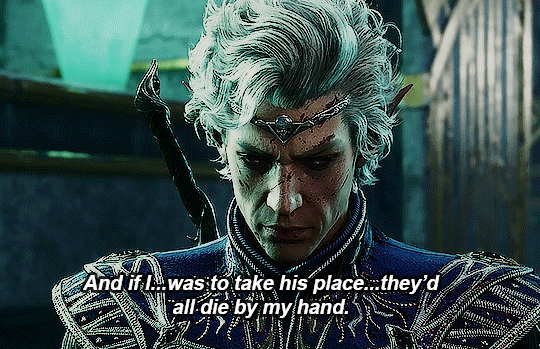




I feel ill. All the fools and villains who ever fell for my ploys, they're — they're here!
#gamingnetwork#vgedit#videogameedit#gamingedit#dailygaming#gameplaydaily#bg3edit#bg3#bgedit#bg3 astarion#astarion#astarion ancunin#:(#i think this scene is so interesting and speaks to why i get so annoyed by the 'any portrayal of astarion#as having an degree of a conscience or goodness in him is stupid and woobifying. hes chaotic evil and thats IT' thing#the grief and guilt. the way he tries to talk himself into it. the way he removes HIS OWN autonomy to do it. pretends theres no other choic#esp in the context of other moments where he preens when hes called good. he LIKES being smth other than what cazador made him#but hes so SCARED. he spends this dialogue talking himself into killing them and he HAS to talk himself into it BECAUSE this kind of evil#isnt easy to him despite it all. theres still scraps of a conscience there yknow? and he hides it from himself by pretending hes less free#astarion is fun BECAUSE hes weird and contradictory and a bad person with the capacity 4 good. BECAUSE he doesnt know what he actually want#also i love the idea of him in this moment rly thinking abt the player....like whether theyre friends or romances#a player whos been really kind and loving to him...kept him safe....trusted him....#thinking about how they let their guard down for him and how in his old life THIS would have been the life#hed been damning them to....years and centuries in a tiny cage somehow even worse than his
299 notes
·
View notes
Text

kasas ... two of them
#prsk#art tag#tsukasa tenma#femkasa#project sekai#proseka#prsk fa#femtasista squad save me...#torpekasa#mr showtime#jesterkasa#“worlds slowest artist” and then i manage to finish this in less than an hour#Okay#also why am i drawing tsukasa more than honami recently this feels fucked up and evil#i will get back to honami posting...
271 notes
·
View notes